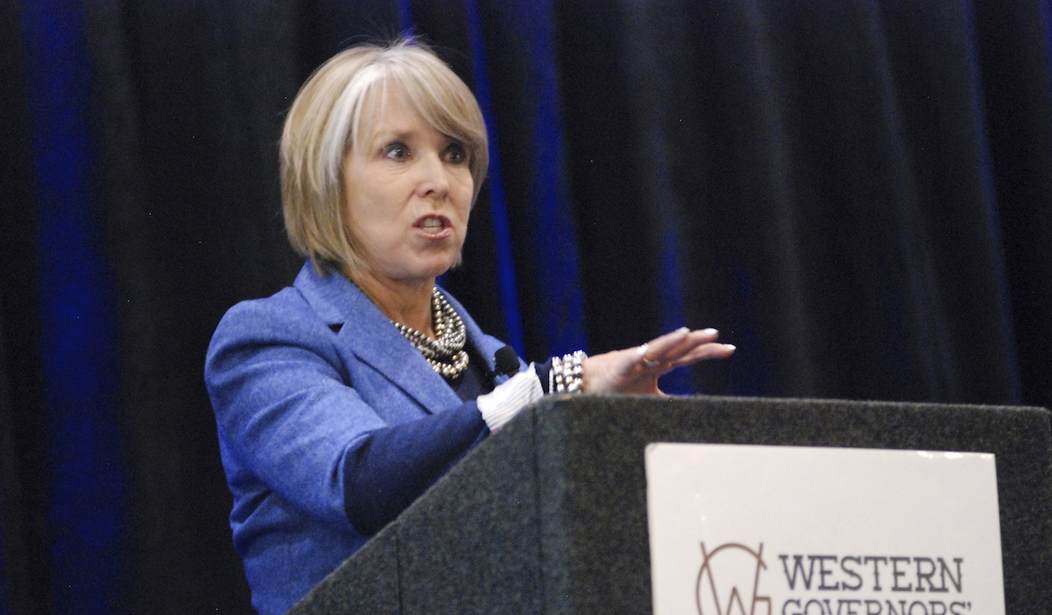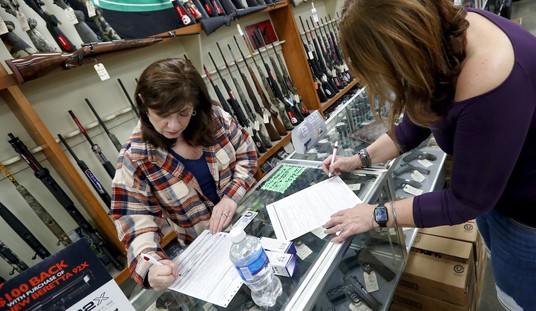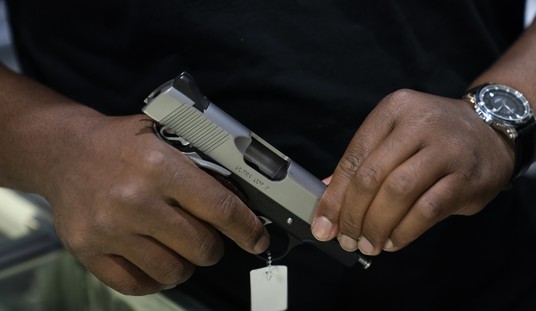New Mexico Gov. Michelle Lujan Grisham’s revised public health order banning open and concealed carry in parks and playgrounds in Albuquerue and Bernalillo County can be enforced, according to U.S. District Judge David H. Urias, though it’s still unclear what, if any, law enforcement agencies will actually be enforcing her edict going forward.
The police chief in Albuquerque, the Bernalillo County sheriff and District Attorney, and New Mexico Attorney General Raul Torrez all declined to enforce the governor’s original order suspending the right to carry throughout the entirety of the city and county, and I’ve not been able to find any comment from those individuals in the wake of Urias’s ruling announcing any change in their policies. Meanwhile, We the Patriots USA, which was one of several organizations filing suit against the carry ban, say they’ll appeal the judge’s decision to the Tenth Circuit Court of Appeals for further review. With Grisham’s order set to expire on November 3rd, the case could be mooted by the time the appellate court has a chance to weigh in, though the governor has already extended her order once and could do so again.
If she’s smart, Grisham would take the district court win and allow the carry prohibitions to sunset a few weeks from now, but I suspect she’ll go to the mat to defend her ban on lawful carry in parks and playgrounds; not because of any real public safety benefit, but because she doesn’t want to voluntarily give up any authority that a judge says she has to unilaterally impose restrictions on legal gun owners and concealed carry holders. A close reading of Urias’s order, however, should give the governor some caution.
In his decision, Urias relied heavily on the district court’s opinion in Maryland Shall Issue v. Montgomery Co, which ruled that the county’s designation of public parks as “sensitive places” where guns can be banned passes the Bruen test. One of the findings by the court in Maryland is that laws passed around the time the Fourteenth Amendment was ratified are a better analogue for modern gun control statutes than looking at what laws were in place at the time the Second Amendment was ratified, which conveniently gives anti-gun politicians like Grisham more historical laws to work with.
The Maryland court observed that, during that time period, cities including New York, N.Y., Philadelphia, Pa., Detroit, Mich., Chicago, Ill., Saint Paul, Minn., Williamsport, Pa., Wilmington, Del., Reading, Pa., Boulder Colo., Trenton, N.J., Phoenixville, Pa., Oakland, Cal., Staunton, Va., and Birmingham, Ala., all maintained regulations that prohibited firearms within public parks. At the state level, the court found that at least three states – Minnesota, Wisconsin, and North Carolina had prohibited the carrying of firearms at public parks not long after the ratification of the Fourteenth Amendment. According to the Maryland court, “These laws which [ ] categorically bar the carrying of firearms in parks, demonstrate that there is ‘historical precedent’ from before, during and after the ratification of the Fourteenth Amendment that ‘evinces a comparable tradition of regulation’ of firearms in parks.”
The plaintiffs in the New Mexico case had pointed to a much different conclusion reached by the federal courts in New Jersey, where a similar prohibition on carrying in parks was deemed likely to fail the Bruen test. Urias acknowledged in his opinion that courts are split on the constitutionality of gun bans in parks, and admitted that the plaintiffs could still prevail at trial.
Whether or not this Court will ultimately agree that Defendants can justify their temporary firearm restrictions under the second step of the Bruen analysis remains to be seen. When all of the laws and ordinances cited by Antonyuk, Koons, and Maryland Shall Issue are combined and tallied, it appears plausible, although not certain, that Defendants may be able to demonstrate a national historical tradition of firearm restrictions at public parks within cities, as observed to arguably be the case by the court in Antonyuk as well as the court in Maryland Shall Issue.
Plaintiffs, for the most part, say very little about the firearm restrictions at public parks in and around the time of the ratification of the Fourteenth Amendment or thereafter, except to disagree that this is the correct time frame under which to perform the Bruen historical traditions analysis and to point out that “two other district courts have found that the local park ordinances up until 1890 governed less than 10% of the nation’s entire population and were unrepresentative with the meaning of Bruen.” It is hard to tell, at this stage of this litigation, and in a case involving temporary firearm restrictions in public parks in one city in New Mexico, whether Plaintiffs will ultimately succeed on the merits of their Second Amendment claim. They may very well do so. But the Court finds that, given the different analysis of the historical evidence by three district courts which have considered the issue post-Bruen, it cannot be said that Plaintiffs’ right to relief is “clear and unequivocal.” Plaintiffs have thus not shown a substantial likelihood of success on the merits of their Second Amendment challenge to Defendants’ temporary firearm restrictions at public parks sufficient to obtain the extraordinary relief of a preliminary injunction.
One of the problems with Urias’s decision is his reliance on findings from other courts instead of doing his own due diligence in applying the Bruen test to Grisham’s order. For one thing, there’s a clear difference between a state law or local ordinance that was approved in the course of normal business and the unilateral suspension of a civil right as Grisham has done with her public health order. Even if Urias believes that parks are valid “sensitive places”, does the governor have the authority to create a new “gun-free” zone without legislative approval simply by declaring a state of emergency?
Urias’s decision to use the time period around the ratification of the Fourteenth Amendment instead of 1791 as the basis for his history, text, and tradition test is also problematic, though he’s not the only judge to seize on the Supreme Court’s lack of specificity about what time period is more appropriate when considering modern gun control laws. SCOTUS could and should have clarified which time period is most important, though Justice Amy Coney Barrett did offer up a hint in her concurrence in Bruen when she stated that the “decision should not be understood to endorse freewheeling reliance on historical practice from the mid-to-late 19th century to establish the original meaning of the Bill of Rights. On the contrary, the Court is careful to caution ‘against giving post-enactment history more weight than it can rightly bear.”
That’s exactly what Urias’s decision does, and the longer this case remains a live issue in the courts, the greater the chances of Grisham’s temporary victory being undone. In the meantime, concealed carry holders who want to protect their kids in Albuquerque parks and playgrounds run the risk of a $5,000 fine for doing so… at least if Grisham can get any law enforcement agencies to enforce her revised carry ban going forward.
With the vast majority of New Mexico residents objecting to the governor’s carry ban, she must also justify her carry ban in the court of public opinion. Urias might believe that her edict is constitutional, but few Albuquerque residents believe it’s going to be effective at reducing violent crime, and her decision to disarm the law-abiding in an attempt to improve public safety is likely to come at a political cost to the governor going forward.









Join the conversation as a VIP Member